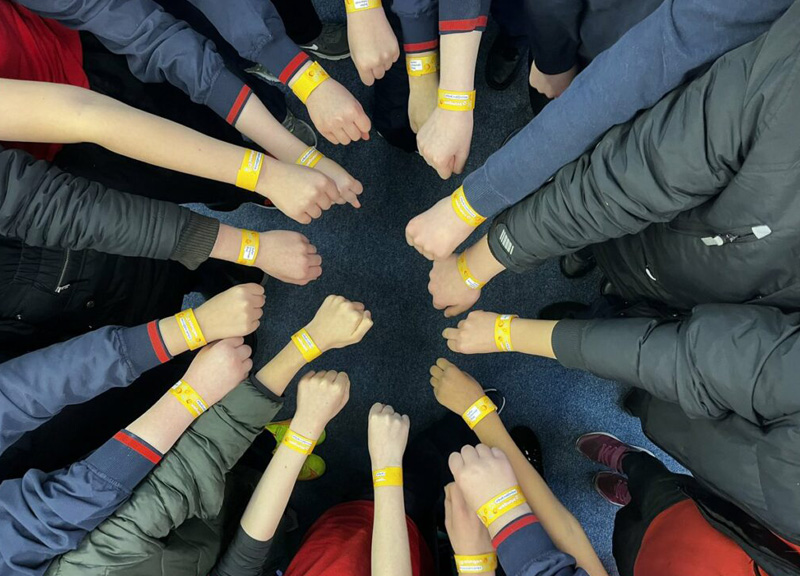Lesson 4 – You’ve been framed
Lesson 4, You’ve been framed, will help the students to reflect on their photo sharing practices. They will examine the characteristics of digital photographs; focusing on what makes them different from traditional photographs.
- +Curriculum Links
- SPHE strand: Myself and others;
SPHE strand unit: My friends and other people – Explore and discuss how individuals can deal with being bullied, knowing that others are being bullied and being a bully.SPHE strand: Myself and the wider world;
SPHE strand unit: Media education – Explore and use some simple broadcasting, production and communication techniques.Activity 2 involves numeracy skills and could be used to help teach indices to 6th class students.
- +Resources needed and methodologies
- Resources Needed:
– Webwise animation: The Photo
– Equipment: School cameras/tablets
– Worksheet 4.2: Going viral – How photo sharing can get out of handMethodologies: – Pairs work, class discussion, photography, role play, numeracy skills: multiplication
- +Activity 4.1 – The Photo
- STEP 1 – Have students watch the third animation, The Photo.
STEP 2 – Lead a short discussion on the following question, to encourage students to empathise with the characters:– Q. Why did Jack share the photo in the first place?
– Q. Why did Cathal attack Jack in the playground?
– Q. In the end, both Cathal and Jack ended up getting into trouble. Was this fair?STEP 3 – As students watch the animation for a second time, have them think about the following question:
– Q. After the photo had been shared, what could Cathal have done to make sure the bullying didn’t get out of hand?STEP 4 – In pairs, have the students discuss their answers to this question and then prepare a short role play. The role play should explore alternative endings to this story.
STEP 5 – Have a number of pairs present their alternative endings to the class. Then the class should discuss the alternative endings and decide on which provides the best option.
- +Activity 4.2 – Going Viral
- STEP 1 – The Photo cartoon shows how picture sharing can easily get out of hand. Emphasise to the students that anything they share online can be shared and is no longer private. Then have the students work in groups to come up with a list of all the different ways of sharing pictures. Get each group to read out their list of methods of sharing. Remind students that messages and pictures can be saved by taking screenshots or photos and can then be shared.
STEP 2 – Next, distribute a copy of Worksheet 4.2 Going viral to every student. You can also allow them to take out a blank piece of paper or a calculator. Students should then follow and complete your instructions carefully.
Read the following script:
Imagine you see a picture that you think all of your friends would really like. You decide to share the picture online or using a messaging app. After 10 minutes all of the people you shared the picture with have seen it. Write down the number of people with whom you shared the picture. Another 10 minutes pass and your friends have now shared the picture with all of their friends. To get an estimate of how many people have seen the picture after twenty minutes, multiply the first number you wrote down by itself (eg 20 x 20=400) and write down your answer.
These people in turn share the picture with their friends. To get an estimate of how many people have seen the picture after thirty minutes, multiply your last answer by the first number you wrote down (400 x 20=8000). These people in turn share the picture with their friends. To get an estimate of how many people have seen the picture after forty minutes, multiply your last answer by the first number you wrote down (8000 x 20=160000). Again these people share the picture with their friends within ten minutes. To get an estimate of how many people have seen the picture after fifty minutes, multiply your last answer by the first number you wrote down (160000 x 20=3200000).Another ten minutes passes and these people now all share the picture with their friends. To get an estimate of how many people have seen the picture after an hour, multiply your last answer by the first number you wrote down (3200000 x 20=64000000). Next time you login online, the picture you first shared is everywhere. This is called a viral effect, because the picture has spread like a virus.
STEP 3 – Get the students feedback to this activity:
– Q. What did this exercise teach you about photo sharing using the internet?
– Q. What would the effects be on a person if a mean or hurtful post was shared in this way?
– Q. How easy do you think it is to remove photos from the internet?Note: This activity can be extended to help explain the mathematical concept of indices to 6th class students.
- +Lesson 4.3 – Photo Time
- STEP 1 – Split the students into small groups and give each group access to a school camera. If there aren’t enough cameras to go around, have half the class complete Worksheet 4.2 while the other half completes this activity. Then switch around to give every student a chance to use the camera.
STEP 2 – Each group should be given about five minutes to take pictures of themselves using the cameras.
STEP 3 – The photos can be group or individual shots or selfies. Each student must be included in at least one photo. Say that these photos might be used to remember their time in school. Allow the students to take as many pictures as they like within the given timeframe. These photos will be used in the next lesson.
- +Extension activity using technology
- If time and resources permit, download a sock puppets app, such as Sock Puppets or Puppet Pals. Have students act out the role play situation in Activity 1 by creating a digital sock puppet animation. After presenting their animations, students will discuss how they addressed cyber bullying, as described in Activity 1.





